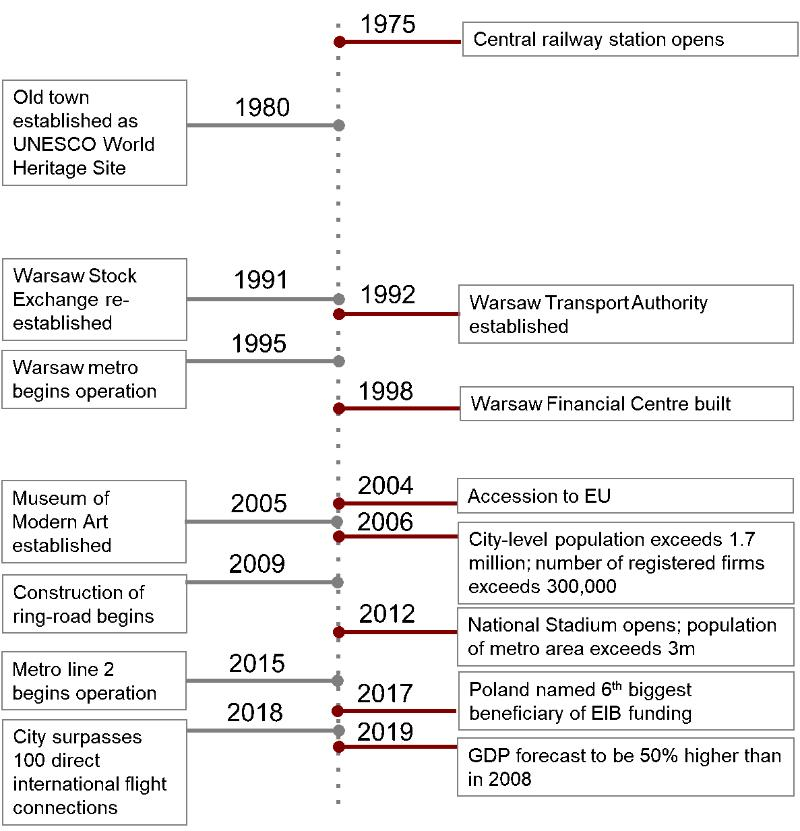By Wojciech Dziemianowicz and Jacek Szlachta
The findings, interpretations and conclusions are those of the authors and do not necessarily reflect the views of the European Investment Bank.
>> Download the entire essay as eBook or PDF
The metropolitan Warsaw region is today the ninth most populated capital city in the EU, with 3 million residents. But it has undergone a series of far-reaching changes to its economic structure over the past fifty years to attain this status.
When Warsaw returned to a market economy in the 1990s, it inherited a unique set of conditions. These included ubiquitous pre-fabricated housing blocks, a distinct lack of single-family homes, numerous empty spaces, a very complex ownership pattern with hundreds of historic property owners demanding restitution from the new state, and almost no legal or regulatory instruments to prevent sprawl. This in turn led to a cycle of haphazard development, sprawl, and a proliferation of low-density suburbs, particularly as the previous planning office was replaced by private companies that lacked planning experience.
Over the past twenty years or so, however, Warsaw’s economy has bounced back. This recovery is due primarily to a cycle of investment in infrastructure that emphasised the metropolitan scale of development and avoided the car-dependent model of growth. It also benefited from Poland’s accession to the EU in 2004, which facilitated free movement of European labour and capital into the city.
Key interventions have included investment in the construction and modernisation of sewage treatment plants and railways, the procurement of new modern rolling stock for the city metro network, and the construction of a city ring road to relieve congestion and link the city to other major European centres including Helsinki, Berlin and Gdansk. The EIB has been instrumental in enabling such interventions. Since the beginning of EIB activity in Poland in 1994, over 40% of loans have focused on transport. Over time, investment has also emphasised improvements to the city’s healthcare, social and education services.
